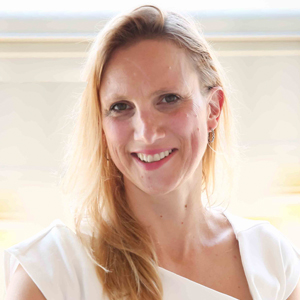As marketers we have historically been somewhat dependent on dividing the world into predictable categories. We track market share against pre-defined segments, we divide our consumers into well-ordered groups and we build plans against key classes of trade.
But one of the biggest macro trends that we are seeing is that many of these clear lines are blurring. Facilitated by the democratising power of the internet, the neat and tidy boxes into which we organise our commercial thinking are starting to disappear. All aspects of business and society are taking on more fluid shapes.
Let’s start at the macro level. Take, for example, our own interactions with machines. Most of us have had personal conversations with Siri, Alexa or Google Home. The lines have blurred so quickly that many of us think of these technologies as intimate associates. What we share in these conversations can be so revealing that since 2016 voice assistants have been programmed to refer people expressing suicidal thoughts to a helpline.
Also, consider the current conversations around gender fluidity. The fact that society is now starting to discuss and accept non-binary definitions of gender and sexual identify signifies a giant shift in how we think about some of the lines that we previously thought of as non-negotiable. Meanwhile, new commercial ecosystems that are disrupting old commercial ecosystems are themselves blurring. WeChat by Tencent continues to challenge the lines by combining search, social media, payments, purchases and entertainment.
Big trends like these are trickling down into smaller trends that blur demographic and cultural lines even more. Older seniors are a rising class of hipster influencers on Instagram. Streetwear is now a luxury product line. Hip hop beats and rhymes inflect country hits.
Altogether, these trends tell us that consumers don’t care about the previously defined boundaries of where and how things fit together. Consumers are determined to use new technologies and to channel new influences to blur the lines as they see fit. As marketers, we must be ready for this future of blurring lines.
- Category lines. Growth is found now in uncomfortable places. Increasingly, disruptive opportunities are found in between traditional category lines—snacks that blur popcorn, chips and diet food or fitness equipment that blurs software, content and social media.
- Functional lines. The explosion of e-commerce and mobile is blurring—even dissolving—the lines dividing sales from marketing. Consumers search and compare while they are in the store shopping. Consumers can scan QR codes while in the aisle and find user reviews instantly. Ads with links to buy online immediately bring communications and retail together as one.
- Consumers versus employees. The line between those who pay and those who profit is blurring as companies rely more on partners and influencers to activate and advocate products. New strategies like open-source innovation and influencer-based marketing create porous boundaries that invest a broad swath of users with a reputational or even a financial interest that is shared with a brand.
In a marketplace of blurring lines, marketing organisations must be vigilant about working with an outside-in mindset. They must see the landscape as consumers live it, not as companies have previously lined it up. In particular, marketing teams must be organised into small units focused on specific objectives if they are to avoid the sorts of bigger silos that often sit between groups and create blind spots. Three things are critical.
- Manage brands around why not what. Brands with a strong sense of why they exist, not simply what they deliver, find it easier to capture the opportunities that are found in a marketplace of blurring lines. Brands like Disney and Virgin have been doing this successfully for many years. Recent successes include Equinox Hotels and the women’s health company LOLA. These kinds of stretches pose big operational challenges, but the reality of blurring lines is here to stay.
- Bust silos. There must be formalized ways of crossing over boundaries within organizations. In some companies, this takes the form of functionally based support groups that cut across teams aligned against specific tasks. Other approaches include things like a structured cadence of collaborative meetings that can share ideas across teams. Additionally, nurturing a new generation of marketing generalists will cultivate a connective tissue that can bring specialists together and turn ideas into action more rapidly and more efficiently.
- Incentivize individuals to blur the lines. None of this will happen unless reward structures incentivize the correct behaviors. One model to think about is the Google 20 percent- where people can spend as much as 20 percent of their time on elective projects. Perhaps this model can be recast into a form of radical collaboration that asks teams to spend a portion of their time crossing lines within companies for the greater good of the team.
Everything is in flux, whether it’s markets, consumers or macro trends. Companies must be in flux as well for their brands to build momentum in the race for success in a marketplace of blurring lines.

